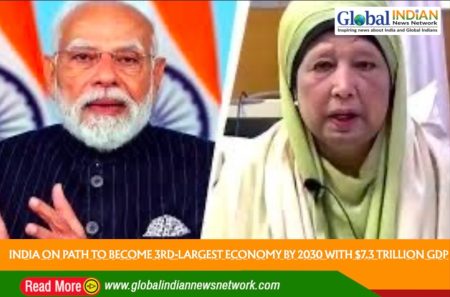 According to a recent report titled “The Indian Payments Handbook 2022-27” by PwC India, it is projected that India’s United Payments Interface (UPI) transactions will reach a daily volume of 1 billion by FY2026-2027.
According to a recent report titled “The Indian Payments Handbook 2022-27” by PwC India, it is projected that India’s United Payments Interface (UPI) transactions will reach a daily volume of 1 billion by FY2026-2027.
In the previous fiscal year (2022-23), UPI transactions dominated the retail segment, accounting for approximately 75% of the total transaction volume. Over the next five years, UPI is expected to further solidify its position, representing 90% of all retail digital payment transactions.
The report highlights the remarkable growth of the Indian digital payments market, which has been expanding at a compound annual growth rate (CAGR) of 50% in terms of transaction volume. It predicts that the market will experience a significant increase from 103 billion transactions in FY2022-23 to 411 billion transactions in FY2026-27.
Notably, UPI transactions are anticipated to increase from 83.71 billion in 2022-23 to 379 billion by 2026-27, showcasing the rising popularity and adoption of this payment method.
Furthermore, the report emphasizes the substantial revenue generated by the credit card business, contributing to approximately 76% of the overall revenue from cards in 2022-23. This makes the credit card segment an attractive and profitable sector for banks, non-banking financial companies (NBFCs), and fintech companies. Revenue from credit card issuance witnessed a growth of 42% in 2022-23 compared to the previous year and is expected to grow at a CAGR of 33% over the next five years.
Looking ahead, credit card issuance is projected to grow at a CAGR of 21% over the next five years, while debit card issuance is expected to experience stagnant growth with a CAGR of 3%. The decline in debit card usage can be attributed to the convenience of UPI-based cash withdrawals, which can now replace traditional cash withdrawals.
Experts suggest that the payments industry in India will focus on expanding ecosystems and exploring new use cases for existing payment platforms in the coming years. Areas such as embedded and ecosystem finance, digital lending based on payment transactions, and offline payments will drive the next phase of growth in the industry.
Overall, the Indian payments landscape is rapidly evolving, driven by technological advancements and changing consumer preferences. The future presents promising opportunities for expansion, innovation, and the establishment of a seamless digital economy in India.












